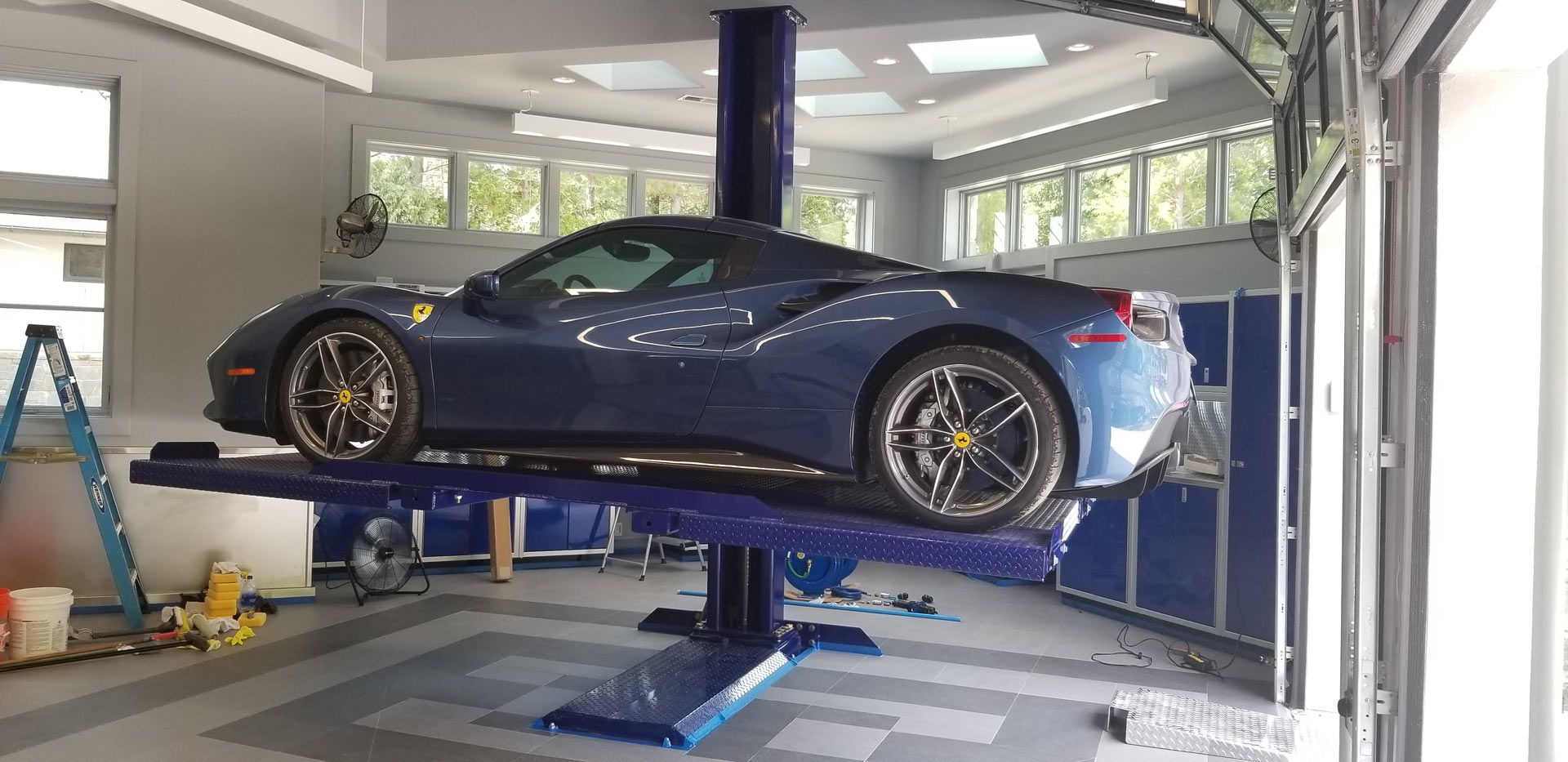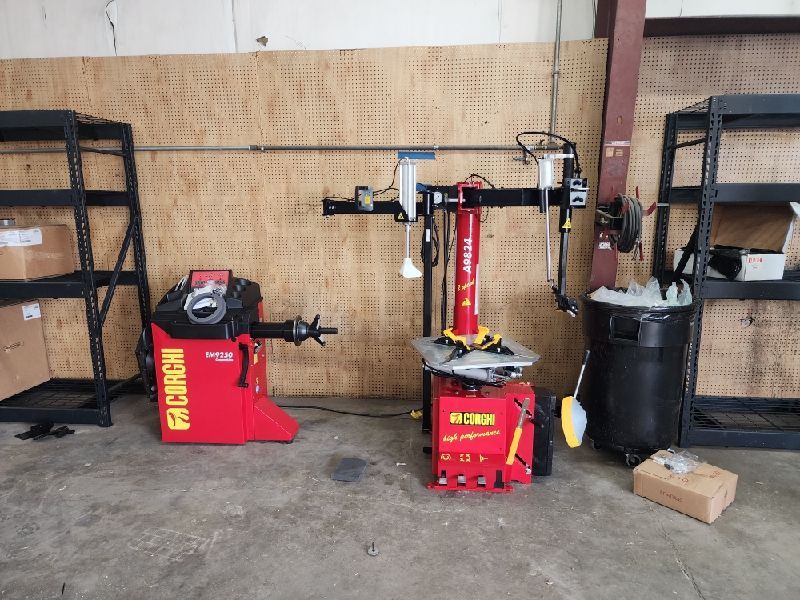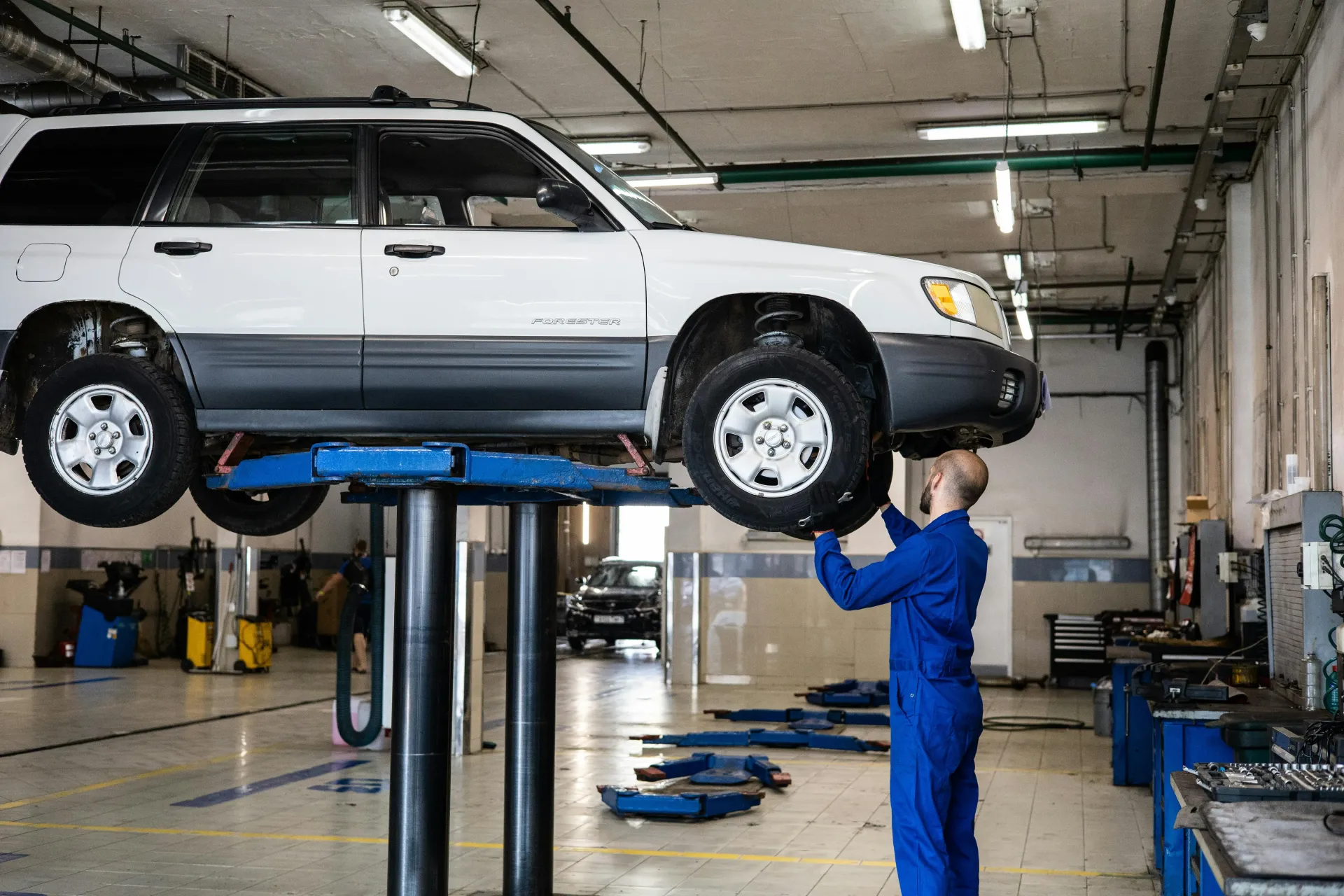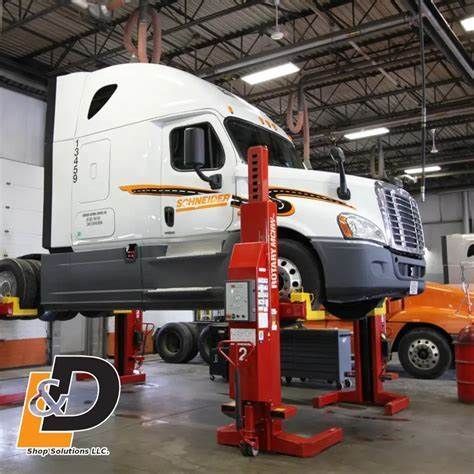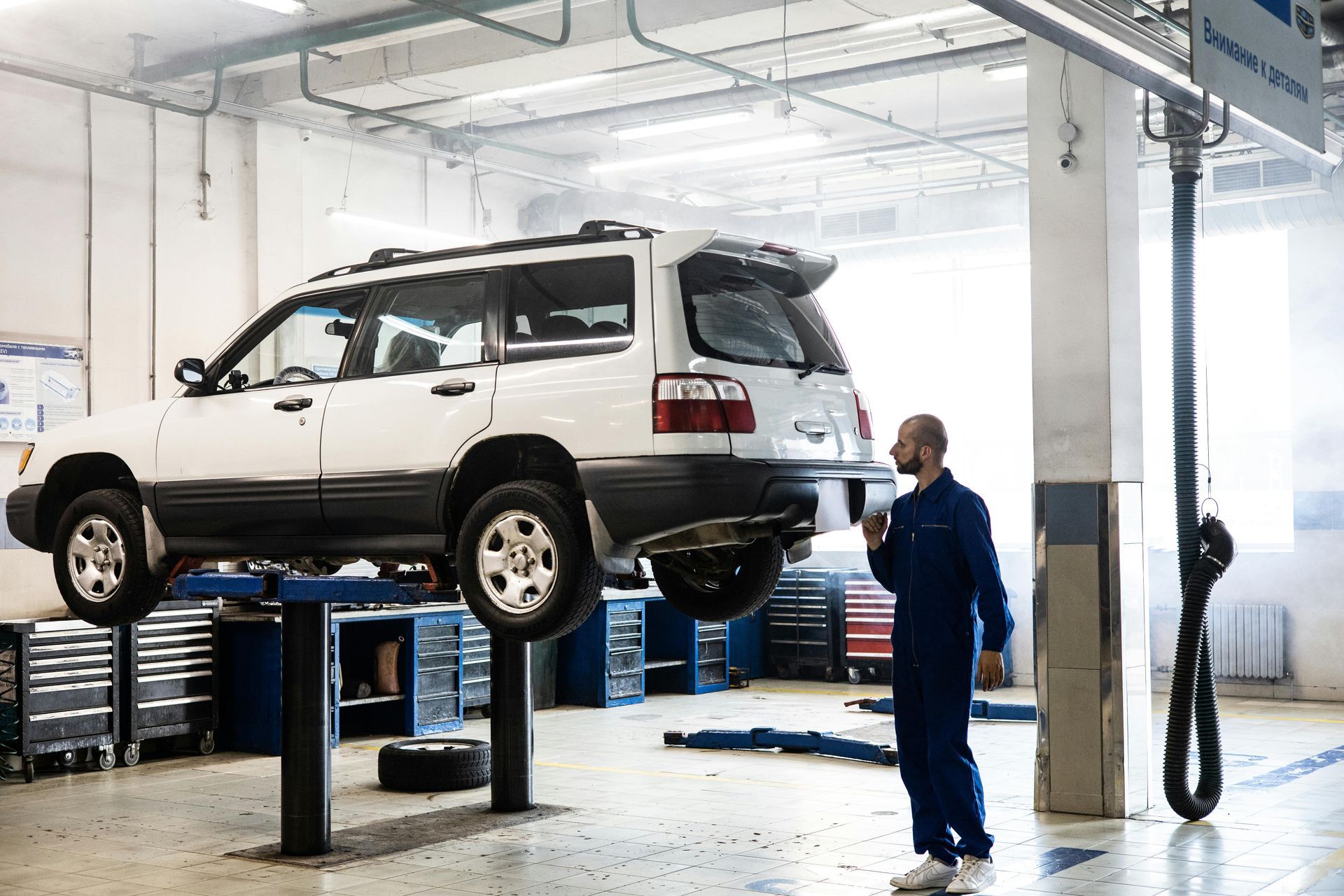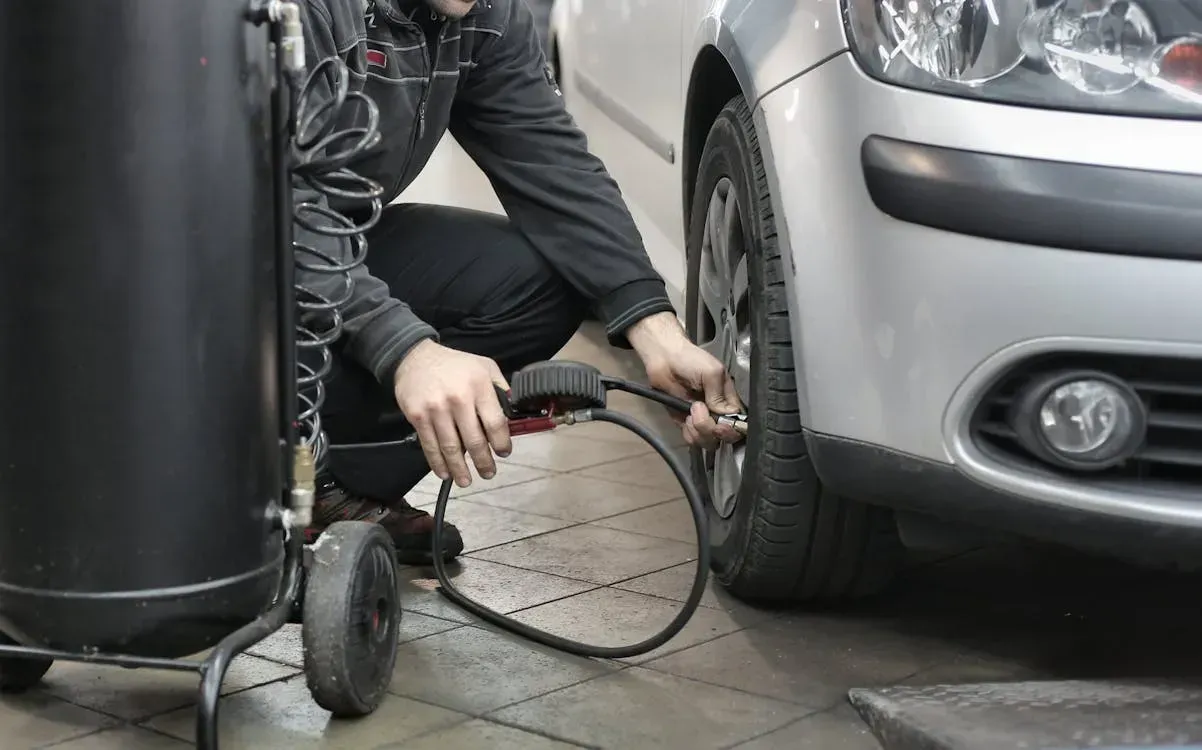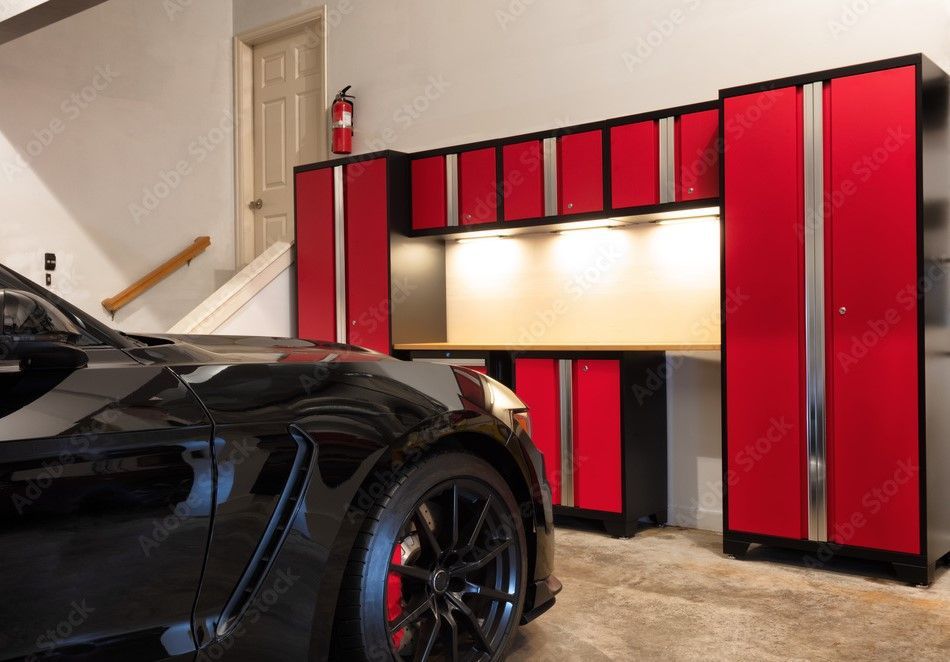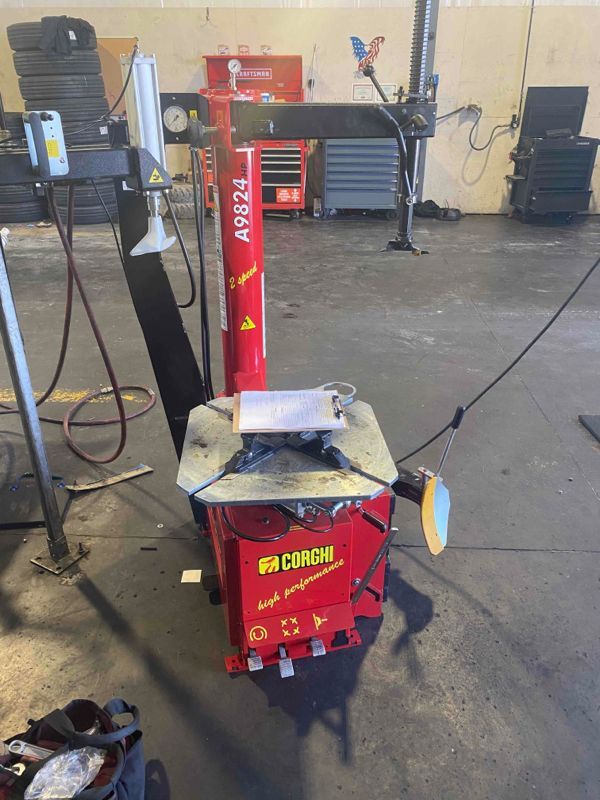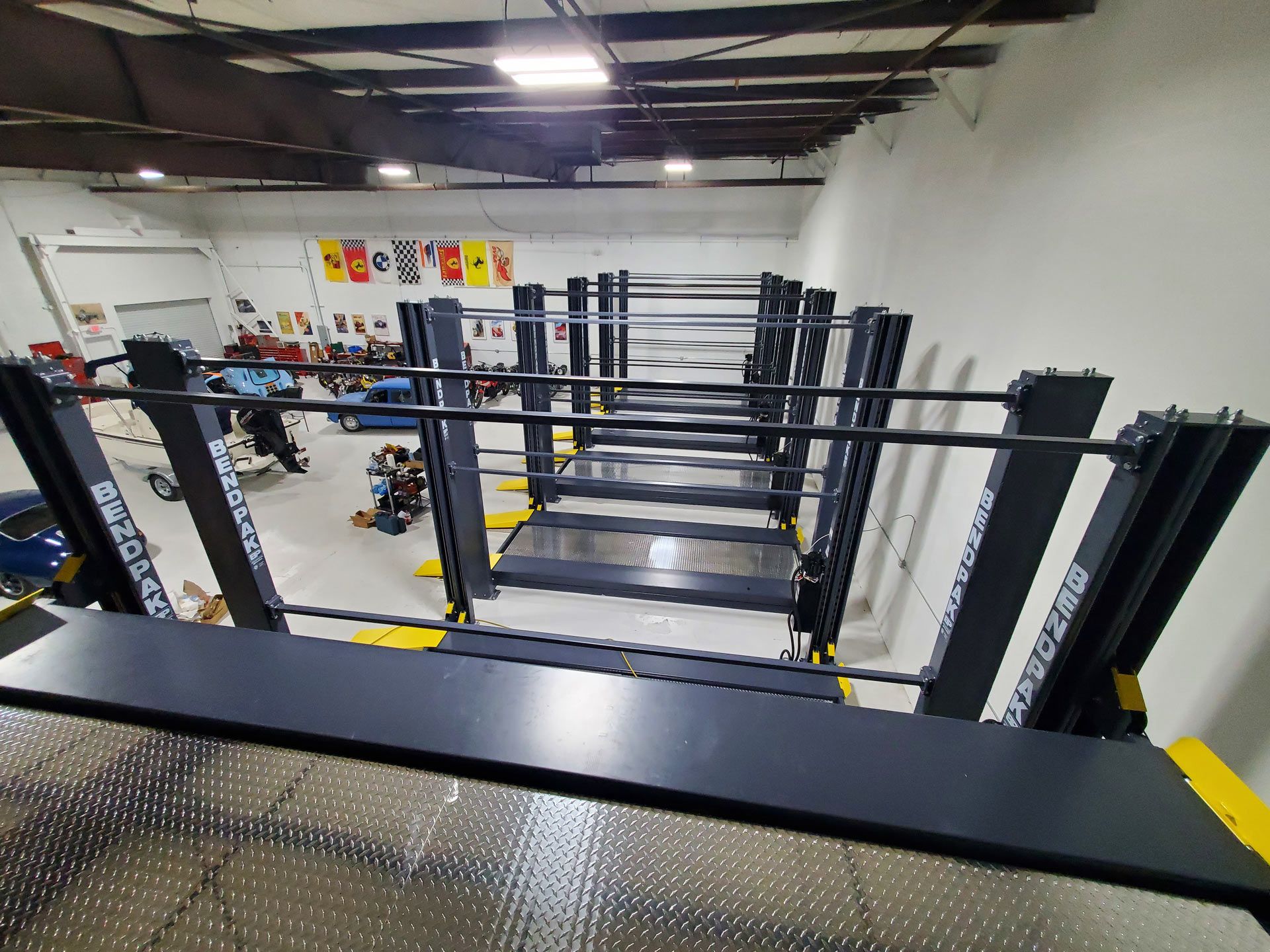Choosing the Right Automotive Lift: 2-Post vs. 4-Post for Your Shop in Angier, NC
September 8, 2025
Introduction
For auto shop owners in Angier, NC, choosing the right automotive lift is one of the biggest decisions you’ll make. It affects technician safety, daily workflow, and the range of vehicles you can handle.
Most shops narrow their choice down to two main types — the 2-post lift and the 4-post lift. On the surface, they serve a similar purpose: to raise a vehicle for maintenance or storage. But in reality, they function quite differently and are built for different goals.
This guide explains how each lift works, when to use them, and the key factors to consider before investing — so you can make a confident, long-term decision for your shop.
Understanding the Two Main Lift Types
The 2-Post Lift
A 2-post lift is the workhorse of many professional repair shops. It features two upright columns and adjustable lifting arms that connect to the vehicle’s frame. When raised, the vehicle’s wheels are suspended, providing full access to the underside.
This design makes it ideal for intensive repair and maintenance work. Tasks like suspension repair, exhaust replacement, and drivetrain service are much easier when the wheels are free.
However, a 2-post lift requires a solid, level concrete floor and precise installation for safety. It’s compact and efficient but not as stable as a 4-post system for heavier or long-term storage needs.
Best suited for:
Professional repair shops, maintenance facilities, and mechanics needing complete undercar access.
The 4-Post Lift
A 4-post lift uses four columns and a pair of runways that the vehicle drives onto. When the lift raises, the vehicle remains supported by its tires — giving it superior stability and balance.
Because of this, the 4-post design is favored for alignment work, long-term parking, or vehicle storage. It’s also easier to install and less dependent on floor condition.
That said, the runways limit access to certain undercar areas unless optional rolling jacks or bridge jacks are added.
Best suited for:
Shops handling heavy vehicles, alignment and inspection services, or homeowners who need extra parking or display space.
How to Choose the Right Lift for Your Shop
Selecting between a 2-post and a 4-post lift isn’t just about preference — it’s about how your business operates. Here’s a structured way to evaluate your options.
1. Define Your Main Purpose
Start by clarifying what you’ll use the lift for most often.
- If you focus on
repairs and servicing, a 2-post lift is usually best.
- If your priority is
storage, alignment, or easy vehicle parking, a 4-post lift will fit better.
- Knowing your workflow helps you avoid investing in features you won’t use.
2. Evaluate Your Space
Your shop’s layout is a critical factor. Measure ceiling height, floor strength, and clearance.
A 2-post lift fits smaller bays and offers more working room underneath. However, it demands a high-quality concrete foundation and at least 10–12 feet of overhead clearance.
A 4-post lift requires more floor space but can work on a wider range of surfaces. It’s also easier to reposition or move later, which appeals to multi-bay or growing shops.
3. Match the Lift to Vehicle Types
Think about the types of vehicles you service.
If your Angier shop mostly handles sedans, light trucks, and everyday vehicles, either lift can work. But for heavier pickups, vans, or commercial fleets, a 4-post system’s stability gives you extra peace of mind.
For mixed operations — like a shop that services both daily drivers and heavy-duty vehicles — combining one of each lift type can create flexibility without taking on excessive space or cost.
4. Consider Workflow and Technician Access
Every minute your technicians spend repositioning a vehicle or adjusting equipment affects productivity.
A 2-post lift provides the best access for underbody work, oil changes, and exhaust systems — everything that requires reaching the vehicle’s frame.
Meanwhile, a 4-post lift streamlines quick jobs like inspections, detailing, or storage turnover. The ability to drive on and off without aligning arms saves time in high-volume environments.
5. Installation, Maintenance, and Safety
Both lifts require professional installation, but their demands differ.
A 2-post lift needs precise anchoring and balance calibration to handle weight evenly. It’s critical to ensure your floor meets the manufacturer’s PSI rating and thickness.
A 4-post lift is easier to install and less intrusive, but periodic checks of cables, locks, and hydraulics are still essential for safe, smooth operation.
Regular maintenance extends equipment life, ensures technician safety, and prevents costly downtime — something every Angier shop owner should budget for.
6. Local Factors to Keep in Mind
If your business operates in Angier or surrounding North Carolina areas, local building conditions can play a role in your setup.
Older structures may have weaker or uneven concrete, which impacts 2-post installation. Local installers familiar with the region’s foundations and permitting requirements can make sure your setup is secure and compliant.
Working with an established provider in Angier also ensures you get fast service, warranty support, and expert advice on future upgrades.
Frequently Asked Questions
What’s the biggest difference between a 2-post and 4-post lift?
A 2-post lift supports the vehicle by its frame, leaving the wheels free. A 4-post lift supports the vehicle by its tires, offering more stability but less undercar clearance
Can a 4-post lift handle heavy-duty vehicles?
Yes. In fact, it’s often better suited for them because the weight is evenly distributed across four columns and runways.
Do I need a special floor for a 2-post lift?
Yes. You’ll need a reinforced, level concrete slab at least four inches thick, depending on your lift’s weight rating.
Which lift works best for home garages?
For most homeowners or collectors, a 4-post lift is the practical choice. It’s safer for storage and doesn’t require floor anchoring.
What ceiling height is recommended?
Typically, 10–12 feet is sufficient for most 2-post lifts. If you plan to stack vehicles on a 4-post lift, you’ll need slightly more clearance.
Why is professional installation important?
Proper installation ensures load balance, secure anchoring, and compliance with safety standards — all essential for technician protection and warranty coverage.
Conclusion
The right lift for your Angier, NC shop depends on what you value most. A 2-post lift is perfect for repair-focused operations where full underside access matters most. A 4-post lift shines in shops prioritizing stability, alignment, or storage flexibility.
When you balance your shop’s space, vehicle mix, and workflow, the best option becomes clear — and the right equipment will elevate not just your vehicles, but your entire operation.
If you’re ready to explore automotive lift options, speak with a local expert who understands your shop layout and can guide you through installation, service, and maintenance for lasting performance.

